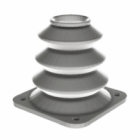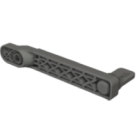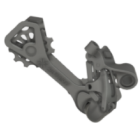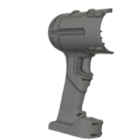How to calculate 3D printing cost?
Pricing a 3D printed part isn’t just about how much filament or powder you use — it’s about understanding the full picture: machine time, labor, material waste, and equipment depreciation. Whether you’re printing at home, in a prototyping lab, or in an industrial setting, knowing how to calculate 3D printing cost gives you more control over budget, quoting, and business viability.
Below, we break down the most relevant factors to consider when estimating costs, regardless of technology or scale.
Material consumption and price per gram
One of the most obvious costs is raw material. For filament-based (FDM) printers, the amount of plastic used is easily measured in grams and multiplied by the price per gram of the spool. Resin and powder-based systems are slightly more complex, as there’s often unused or waste material to account for.
To find out how much a 3D print costs in terms of material, you need to:
- get the total material weight (from slicer software),
- multiply by the actual cost per gram or milliliter,
- factor in wastage or unused powder (especially in SLS or SLA).
Some software includes this automatically, but it’s wise to double-check it manually, especially when quoting client projects.
Machine time and energy usage
The cost of 3D printing per hour includes more than just electricity. It also reflects wear and tear on the printer, maintenance intervals, and — in professional contexts — machine amortization. To calculate this:
- estimate the cost per hour of using the printer (e.g., €1.50–€5 for FDM, much more for SLS or DMLS),
- multiply that by the print time from your slicer (in hours),
- add expected maintenance or service time if relevant.
For personal use, the hourly rate can be symbolic. In commercial or industrial settings, however, it’s essential for quoting and profit margin.
Labor and post-processing
Even when printing is automated, human time still matters. Time spent removing supports, sanding, curing, or inspecting parts should be included when estimating how much a 3D printed part costs. Labor rates vary by region and role, but even basic post-processing can take 15–60 minutes per part.
Don’t forget: if you’re running a business or bureau, administrative and setup time also counts — even if it’s not directly billable.
Software and machine depreciation
Less obvious, but still important, are fixed costs spread over time:
- machine depreciation — divide the printer’s cost over its expected lifespan (e.g., 3–5 years),
- slicing and modeling software — many professional tools are subscription-based,
- accessories and consumables — nozzles, build plates, filters, gloves, IPA, etc.
These can be amortized into a per-part cost or bundled into an hourly rate.
When you need more detailed cost modeling
If you want a fast, repeatable way to estimate total production costs — especially for SLS 3D printing — we recommend checking out this detailed guide by Sinterit on how to calculate 3D printing costs easily. It’s designed to handle not just material and time, but all the hidden variables that influence total project cost — from powder refresh rates to maintenance cycles. This resource is particularly useful for service providers, small batch manufacturers, or anyone managing SLS workflows who needs a clear ROI model.
Explore also
- Factors affecting print cost
- 3D printing: in-house vs outsourcing
- Is 3D printing cost-effective for production and prototyping?
- Is buying a 3D printer worth it in 2025?
- How much is 3D printing?
- Is 3D printing profitable?
- How to reduce 3D printing cost
- Do 3D printers use a lot of electricity?
Related categories
 Austria
Austria  Bosnia and Herzegovina
Bosnia and Herzegovina  Bulgaria
Bulgaria  Croatia
Croatia  Czech Republic
Czech Republic  Denmark
Denmark  Estonia
Estonia  Finland
Finland  France
France  Germany
Germany  Greece
Greece  Hungary
Hungary  Ireland
Ireland  Italy
Italy  Latvia
Latvia  Lithuania
Lithuania  Poland
Poland  Portugal
Portugal  Romania
Romania  Slovakia
Slovakia  Slovenia
Slovenia  Spain
Spain  Sweden
Sweden  Switzerland
Switzerland  United Kingdom
United Kingdom  Ukraine
Ukraine  China
China  Hong Kong
Hong Kong  India
India  Israel
Israel  Japan
Japan  Malaysia
Malaysia  Philippines
Philippines  Saudi Arabia
Saudi Arabia  South Korea
South Korea  Taiwan
Taiwan  Thailand
Thailand  Turkey
Turkey  United Arab Emirates
United Arab Emirates  Egypt
Egypt  South Africa
South Africa  Tunisia
Tunisia  Canada
Canada  Mexico
Mexico  United States
United States  Brasil
Brasil  Colombia
Colombia  Australia
Australia  New Zealand
New Zealand 












